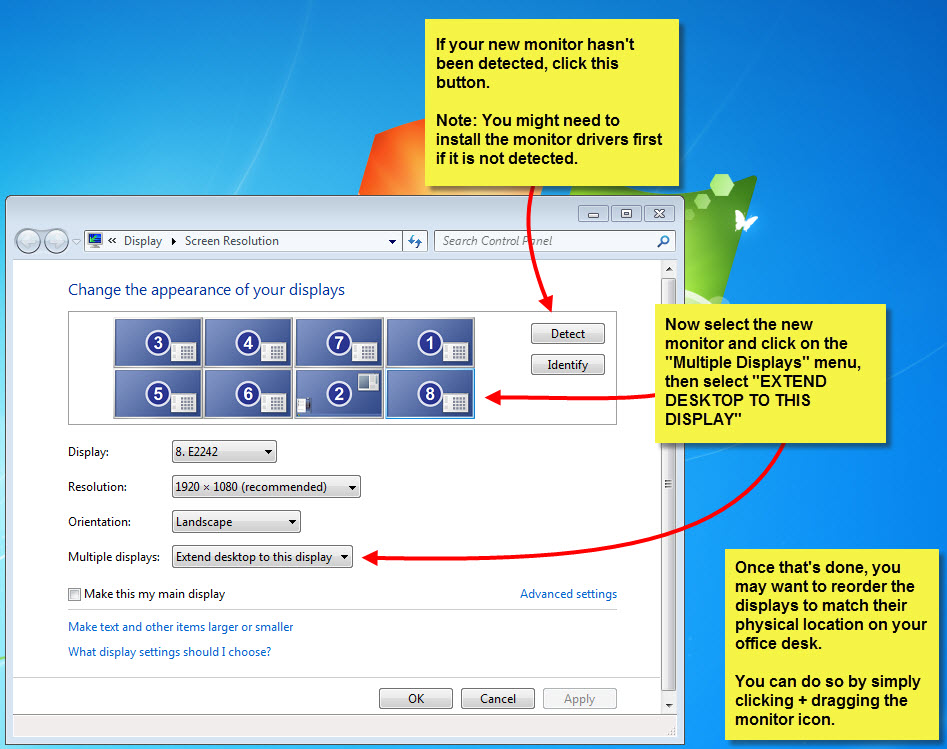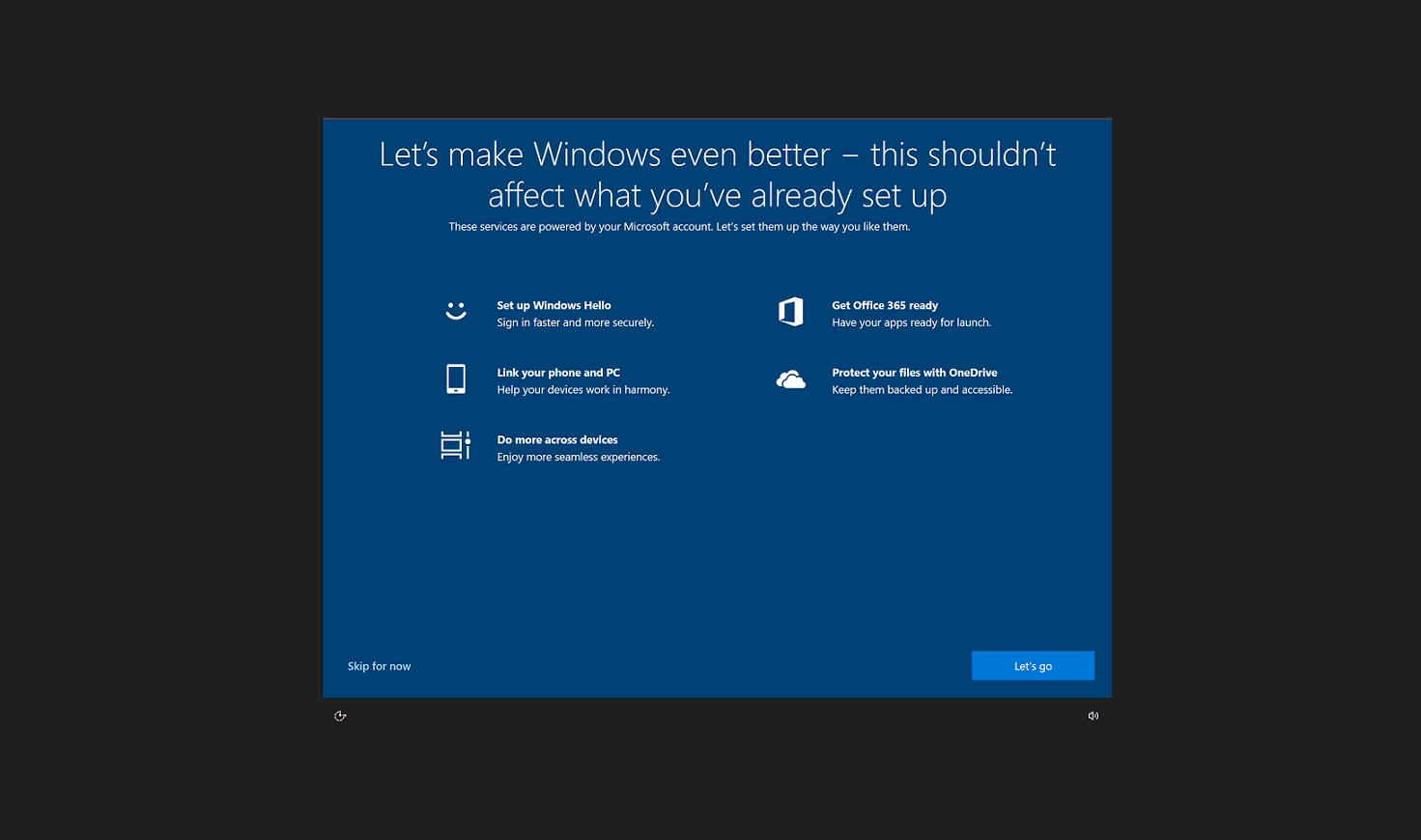
- WINDOWS MONITOR SETTING FULL
- WINDOWS MONITOR SETTING WINDOWS 10
- WINDOWS MONITOR SETTING PC
- WINDOWS MONITOR SETTING TV
- WINDOWS MONITOR SETTING WINDOWS
Contact your ISP to get a public IPv4 address. To connect your laptop to an auxiliary display, you’ll need to know what kind of ports your laptop has to make sure the connection between the two devices is compatible.
WINDOWS MONITOR SETTING PC
If you have a double NAT with your ISP, it might prevent you from connecting. Whether you’re a student, a CEO, or a just a casual PC user, setting up an external monitor for a laptop is one of the best hacks for improving your overall productivity. If your ISP (Internet Service Provider) uses DS-Lite, you'll need to switch to Dual Stack or IPV4. Make sure you don't have any DMZ host configured in your router settings. WINDOWS MONITOR SETTING WINDOWS
If you are trying to connect to Shadow or another cloud service: The Windows display settings can be configured under Windows Control Panel -> Screen Resolution. You'll need to get your own dedicated router.

The best option for users of Windows XP having rotated LCD.
 If you are using a public Wi-Fi from an apartment building or office, those often prevent communication between devices. Using ClearType on these display configurations will actually reduce the display quality.
If you are using a public Wi-Fi from an apartment building or office, those often prevent communication between devices. Using ClearType on these display configurations will actually reduce the display quality. WINDOWS MONITOR SETTING FULL
Make sure you have 'Full cone NAT' or 'Open NAT' enabled in your router settings if such an option exists This is a quick guide for setting up 10-bit for full screen DirectX programs - such as games - through your graphics card software once you have both a 10-bit per channel capable graphics card (Nvidia Quadro / AMD Radeon Pro, and some Nvidia GeForce / AMD Radeon) and a 10-bit per channel monitor connected to that graphics card. Under Colors, select True Color (32 bit), and then click OK. Click Advanced settings, and then click the Monitor tab. Make sure your PC isn't running VPN software Open Screen Resolution by clicking the Start button, clicking Control Panel, and then, under Appearance and Personalization, clicking Adjust screen resolution. If using McAfee, Norton, or any other anti-virus, try disabling them or adding an exception for Virtual Desktop Streamer. Extending screen Win 10 settings Note: Try to Connect your HDMI cable to the monitor which you want to use as primary because some users have reported that the monitor that is connected using the HDMI cables is actually recognized as the primary. On Windows 10, setting up a second monitor is a convenient way to expand the desktop canvas to work with multiple apps and play games on your laptop or desktop computer. If using Avast or AVG, make sure the Firewall network profile is set to Private instead of Public You can change the setting to Extend these displays from the display settings in Windows 10. Make sure the Windows Firewall isn't blocking all connections ( see here) and restart your computer. To do so, follow these steps: Step 1: Open Settings on your PC. WINDOWS MONITOR SETTING WINDOWS 10
Make sure your computer is connected to the same router and is on the same network as your headset (the headset might be on a Guest network for example) Many times, simply reverting to the default Windows 10 theme solves all the display woes. but the dimensions were a big deal (thanks!), and two clicks to move it to that monitor is no big deal.If you see a ' Not on same network' warning and are not connecting through the internet remotely: ((As I said before, I took the principles of a "monitor to the left" or "monitor to the right", and tried applying them to a "monitor" above. In my example, the ORIGINAL settings were: Here’s a simple productivity hack for yourself and your staff: Have multiple monitors.Most newer computers will support multiple monitors without any difficu. Now, after editing the RDP settings file, I can see all edges - EVEN WHEN MAXIMIZED. So, all window edges were invisible, when Remote Desktop was maximized. WINDOWS MONITOR SETTING TV
Unfortunately, the TV only lets me control its horizontal and vertical *stretch*, for its "PC" input - not its HDMI input. In my situation, this dimension control made a big difference: I'm using my 32" HDTV as a 3rd monitor, connected thru the HDMI port (for better resolution than VGA). If that happens, disconnect and reconnect a second time: you get the edges after reconnecting.)) ((Sometimes, using - to maximize Remote Desktop does not leave the window area *edges* clickable. Open the charms by pointing to the upper-right or lower-right corner with the mouse to see the charms (Windows Logo keyboard button + C).Select Control Panel Display.Choose a size you want for DPI size (recommend Smaller - 100). In my case, after double-clicking my edited "M3.rdp", I manually move it to the correct monitor, then - to maximize the window to that monitor's desktop. Change the DPI font settings for Windows 8/8.1. Try turning off the Windows Night light feature, HDR or uninstalling applications that change the. Though this did not *start* my window in another monitor, as I hoped, it did set the Remote Desktop windows dimensions *even when maximized*. You have HDR / WCG enabled in your Display Settings.






 0 kommentar(er)
0 kommentar(er)
